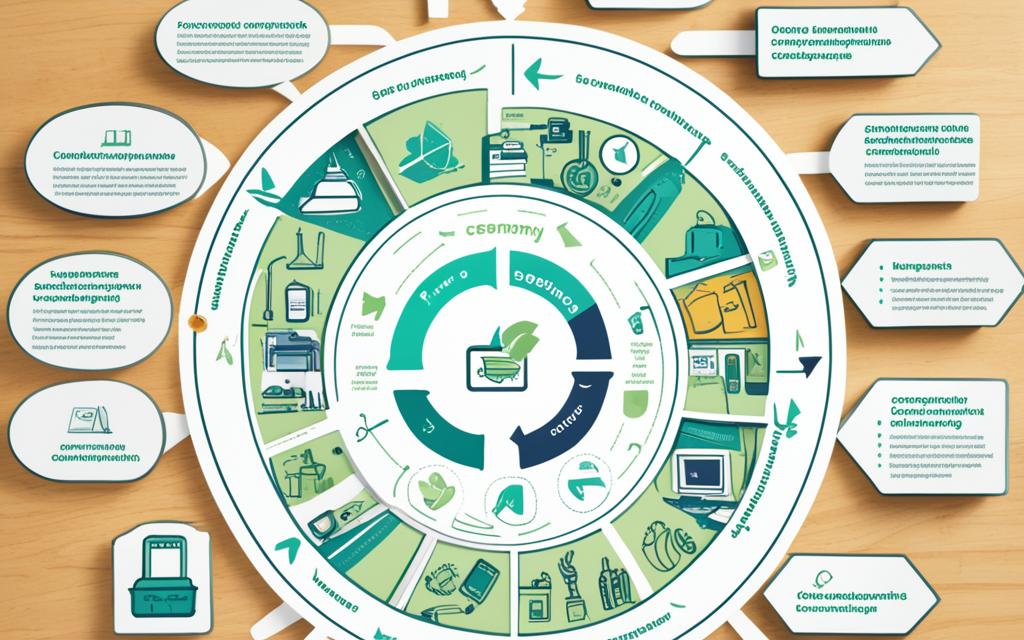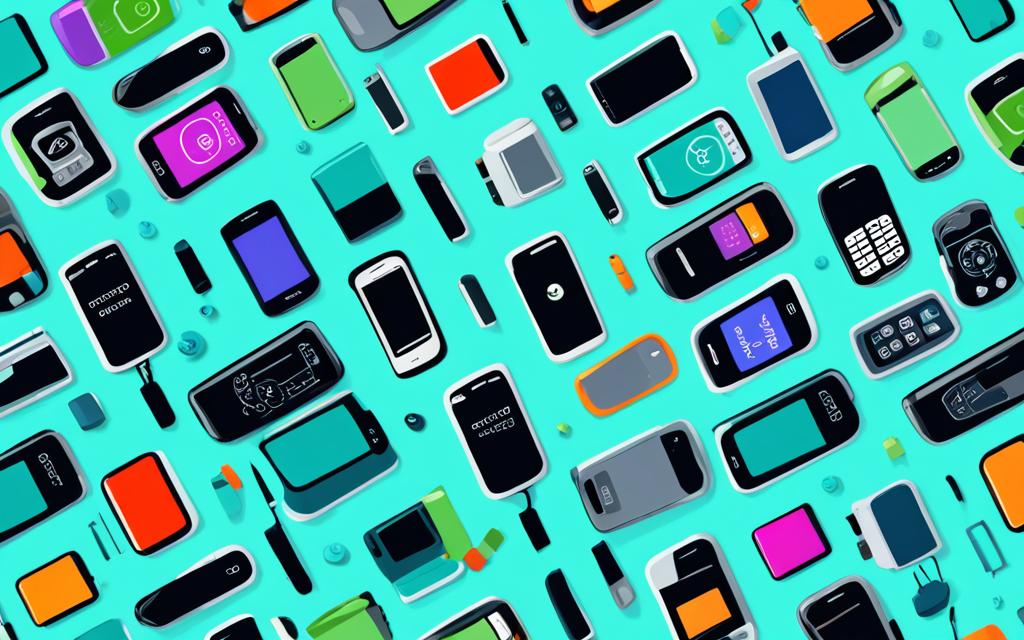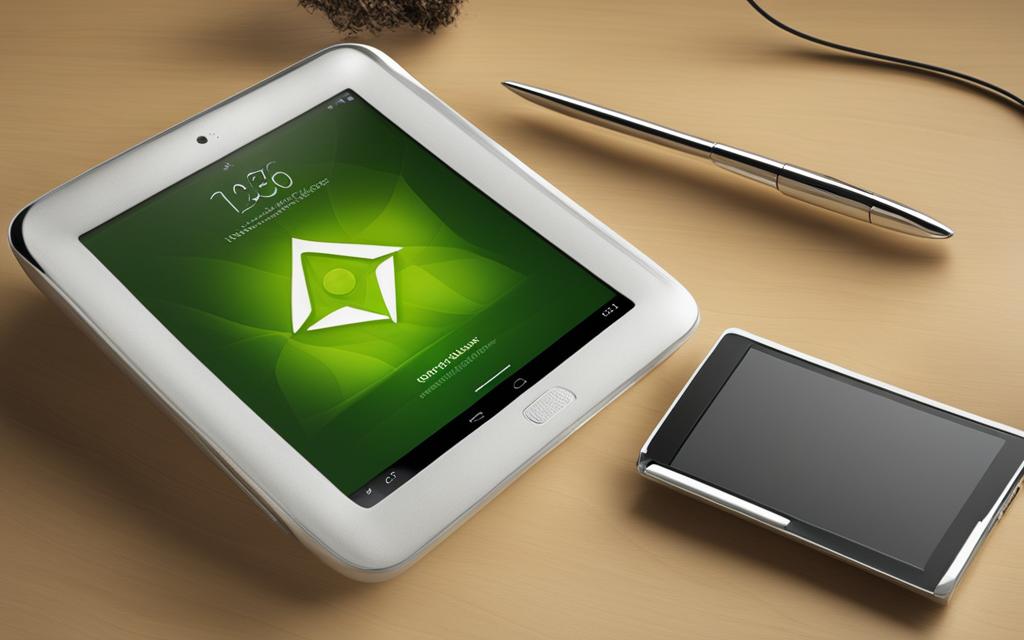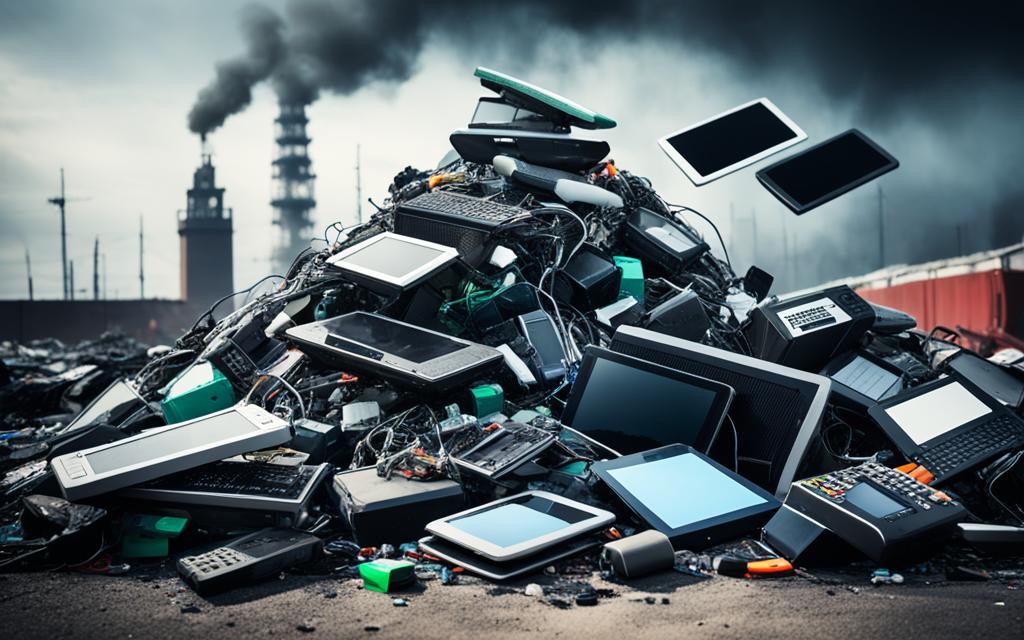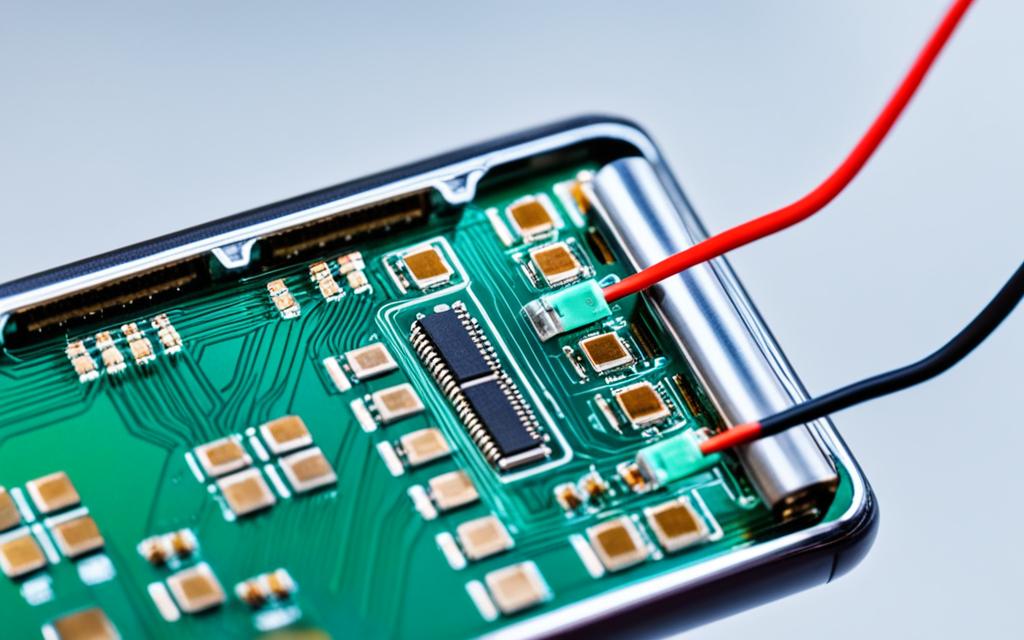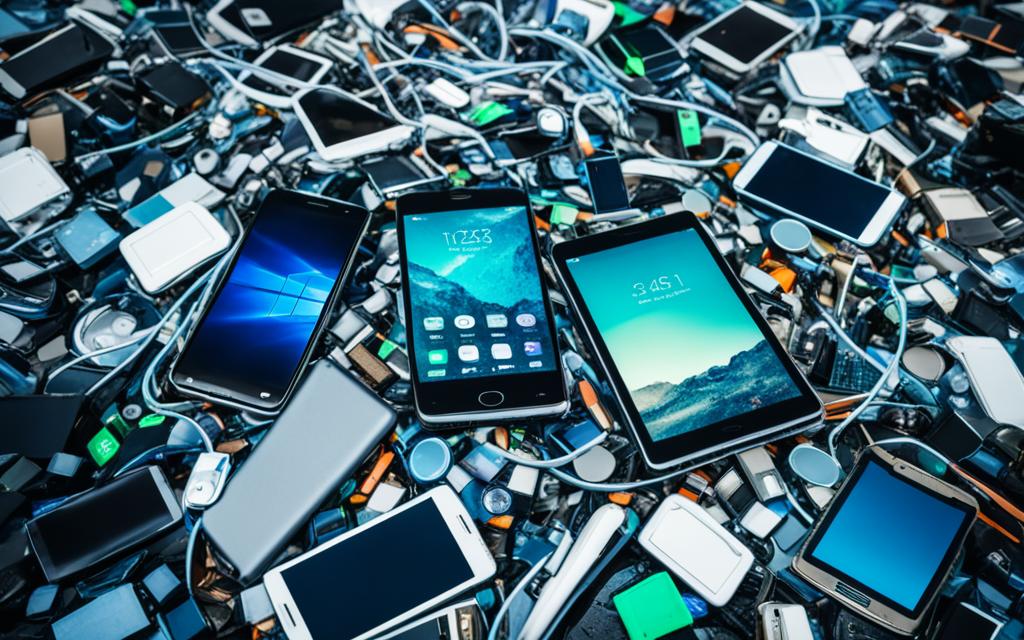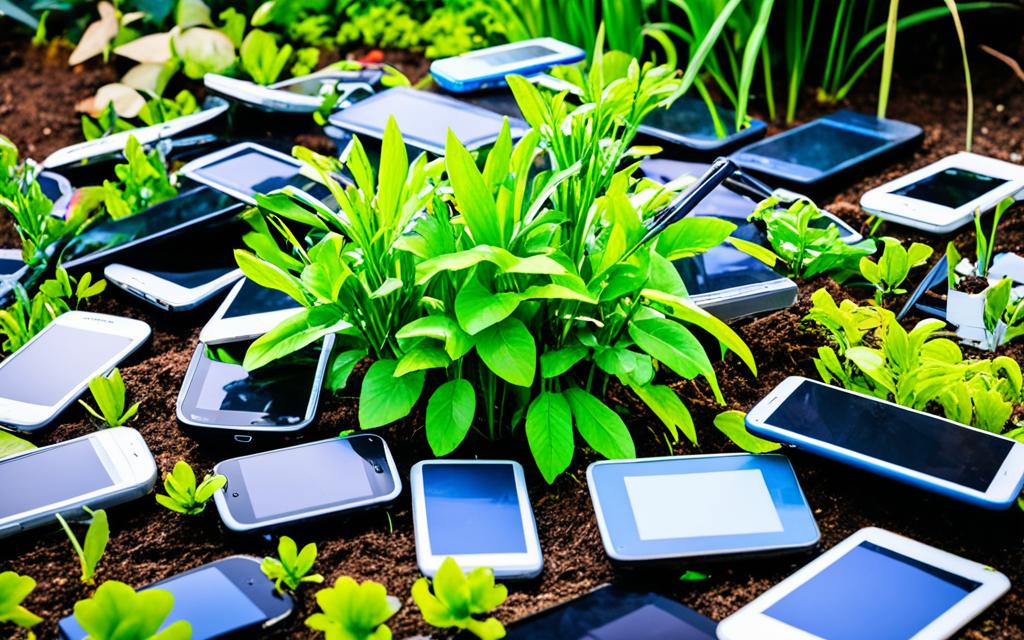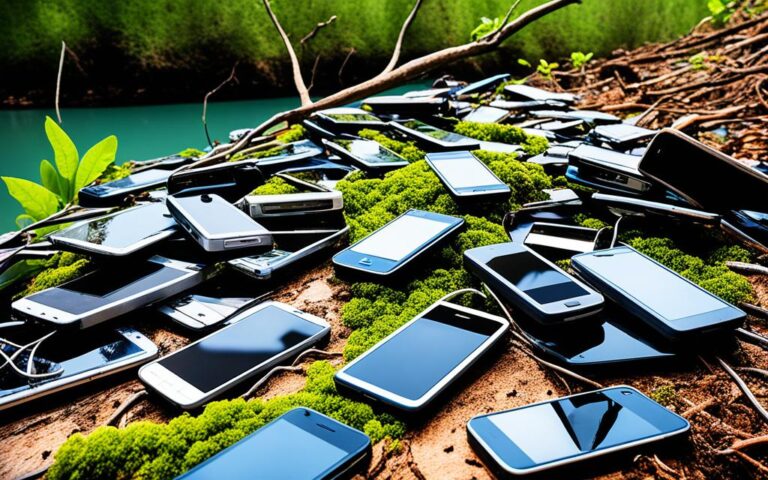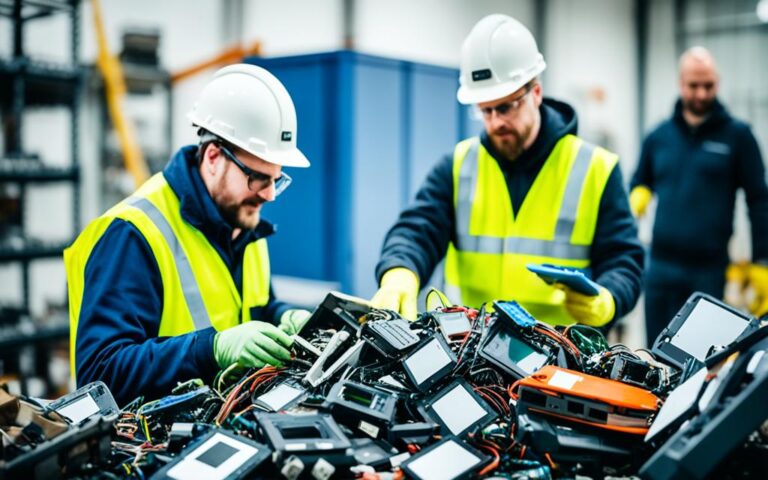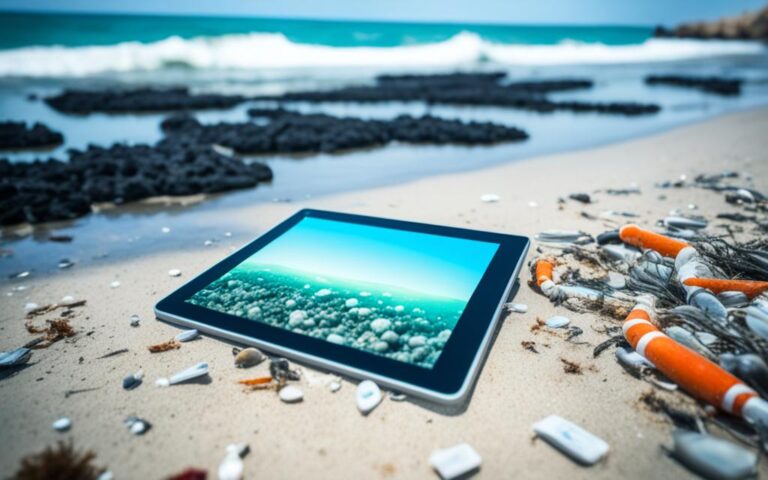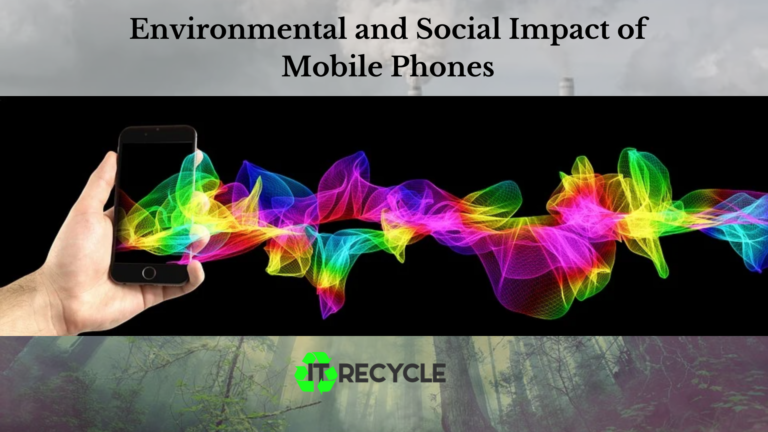The Future is Circular: How Phone and Tablet Recycling Fits into the Circular Economy
Welcome to a future where sustainability and circularity are at the forefront of our priorities. In this rapidly evolving world, it is crucial that we embrace innovative solutions to tackle pressing environmental challenges. One such solution lies in the realm of phone and tablet recycling, an integral part of the circular economy.
The circular economy is a regenerative system that aims to minimize waste and maximize resource efficiency by designing products with their entire lifecycle in mind. It seeks to transition away from the traditional linear model of take-make-dispose and instead focuses on keeping products and materials in use for as long as possible. By doing so, we can significantly reduce our reliance on raw materials, mitigate electronic waste, and promote a more sustainable future.
Phone and tablet recycling plays a vital role in achieving the goals of the circular economy. As electronic devices continue to dominate our lives, their impact on the environment becomes increasingly significant. The rapid advancements in technology have led to shorter product lifecycles and a staggering amount of electronic waste.
Consumer attitudes towards refurbished products are changing, with an increasing number of people recognizing the value in extending the lifespan of their devices. By opting for refurbished devices, we not only reduce electronic waste but also support a more sustainable approach to consumption. Additionally, sustainable product design is instrumental in ensuring that devices are designed for longevity, repairability, and recyclability, thus minimizing their environmental footprint.
In this article, we will delve deeper into the challenges faced in phone and tablet recycling, the importance of sustainable product design, and the benefits of embracing a circular economy for electronics. Together, let us embark on a journey towards a brighter and greener future.
The Problem with the Design of Electronics
Consumer demand for refurbished electronics is on the rise, with 64% of people admitting to having purchased a refurbished or repaired electrical item in the past. However, manufacturers, especially in the mobile phone and tablet industry, are failing to fully embrace circular designs.
When it comes to manufacturers, one prominent example is Apple. Their design practices make it challenging for consumers to repair or replace parts themselves, hindering the overall repairability and lifespan of their devices. The increased use of glue in iPhone designs and the limited access to repair parts are key factors contributing to this difficulty.
Despite this, consumers are showing their willingness to purchase refurbished products, outpacing manufacturers in their awareness and support for circular designs. This highlights the urgent need for manufacturers to prioritize circular designs and take actionable steps to improve product repairability and longevity.
Manufacturers’ Reluctance to Embrace Circular Designs
Manufacturers in the electronics industry are often hesitant to adopt circular designs due to various reasons, such as:
- Limited market demand perception: Manufacturers may believe that there is insufficient market demand for refurbished electronics, leading them to prioritize producing new products instead.
- Risk of cannibalization: Manufacturers fear that promoting circular designs and repairability may cannibalize their sales of new devices.
- Complexity in design and supply chain: Designing products for circularity and repairability requires additional time, effort, and investment in research and development, as well as restructuring supply chains.
However, by overlooking the potential benefits of circular designs, manufacturers not only miss out on addressing environmental concerns but also risk losing market share to competitors who prioritize sustainability and meet consumer demand for refurbished electronics.
The Impact of Apple’s Design Practices
Apple, being one of the leading brands in the technology industry, has a significant impact on the overall design practices of electronic devices.
“Our products are built to last, and with proper care, you’ll be able to use them for many years. When it comes to recycling and disposal, as well as repair possibilities, we believe it should be easier than ever.” – Apple
However, Apple’s design choices often make it difficult for users to repair their devices independently or have them repaired by third-party repair services. By restricting access to replacement parts and implementing design elements that require specialized tools and expertise, Apple effectively limits the options for repairing and extending the lifespan of their devices.
This not only increases electronic waste but also perpetuates a cycle of consumption, where users are encouraged to replace their devices entirely rather than repair them. This approach contradicts the principles of a circular economy and disrupts the potential for a more sustainable future for electronics.
| Key Concerns with Apple’s Design Practices | Impact |
|---|---|
| Limited access to repair parts | Increases dependence on official Apple repair services and limits repair options for consumers and third-party repair businesses. |
| Complex design elements | Makes it challenging for users to disassemble and repair devices without causing damage, leading to more e-waste. |
| Glue-based construction | Creates barriers to accessing internal components, further hindering repairability and contributing to the disposable nature of devices. |
The Importance of Sustainable Product Design
The transition to a circular economy relies heavily on sustainable product design. By prioritizing durability, resource efficiency, and the ability to reuse or recycle materials, designers play a vital role in creating a more sustainable future. Electronic goods, such as smartphones and tablets, need to be designed with a focus on longevity and the preservation of valuable resources.
Understanding the value and future need of raw materials in electronic products is essential for creating designs that go beyond the concept of single-use. This means considering how products can be easily disassembled, repaired, and repurposed. By designing with these principles in mind, we can reduce waste and minimize the need for new resources.
Brands like Apple are leading the way by implementing take-back schemes and recycling initiatives to recover and reuse materials. However, there is still a lack of knowledge, expertise, and strategies surrounding the end-of-life of electronic products and materials. This lack of understanding hinders the extraction of valuable resources and locks them into products that are difficult to recycle.
| Benefits of Sustainable Product Design | Challenges in Implementation |
|---|---|
| 1. Extended lifespan of electronic devices | 1. Lack of knowledge and expertise in end-of-life management |
| 2. Reduction in resource consumption | 2. Limited availability of recycling infrastructure |
| 3. Minimization of waste generation | 3. Resistance from manufacturers to adopt circular designs |
| 4. Recovery and reuse of valuable materials | 4. Consumer awareness and engagement |
By tackling these challenges head-on and embracing sustainable product design, we can accelerate the transition to a circular economy. It requires collaboration and commitment from designers, manufacturers, and consumers alike to ensure that our electronic devices have a longer lifespan, conserve resources, and minimize the environmental impact of our consumption.
Remember, every small step towards sustainable product design brings us closer to a future where circularity, resource efficiency, and environmental stewardship are at the forefront of our electronic industry.
Embracing a Circular Economy for Electronics
Transitioning to a circular economy for electronics is essential in our efforts to reduce greenhouse gas emissions and waste. A circular economy has the potential to decrease greenhouse gas emissions by an impressive 39%. By designing products with recyclability in mind, promoting the reuse and repair of devices, and increasing the recovery of raw materials, we can make significant strides in both environmental conservation and resource consumption reduction.
One company leading the way in establishing a circular economy is Deutsche Telekom. They are committed to sustainable practices in design and production, as well as championing the concept of reconditioning, repair, and end-of-life recycling of electronic devices. By recycling electronic devices and their packaging, we not only conserve valuable resources but also diminish emissions associated with the sourcing of new materials.
To better understand the benefits of embracing a circular economy for electronics, consider the following table:
| Benefits of Embracing a Circular Economy for Electronics | |
|---|---|
| Reduced greenhouse gas emissions | A circular economy could potentially reduce greenhouse gas emissions by 39%. |
| Waste reduction | Recycling efforts associated with a circular economy contribute to waste reduction. |
| Raw material reuse | A circular economy emphasizes the recovery and reuse of valuable raw materials. |
Recycling Efforts
Recycling is an integral part of the circular economy for electronics. It plays a vital role in reducing the demand for new raw materials and curbing the negative impact of resource extraction. By recycling electronic devices, we can recover valuable materials such as precious metals and plastics, which can be reused in the production of new products.
Reduce Greenhouse Gas Emissions
Achieving a circular economy for electronics can significantly contribute to reducing greenhouse gas emissions. By designing products for recyclability and increasing the lifespan of devices through repair and refurbishment, we can prolong their usage and decrease the need for manufacturing new devices, thereby reducing the carbon footprint associated with production and transportation.
Waste Reduction
A circular economy approach prioritizes waste reduction through strategies such as extending the lifespan of electronic devices, promoting repairs, and encouraging the reuse of components. By reducing waste generation, we can conserve valuable resources and minimize the environmental impact associated with disposal.
Raw Material Reuse
In a circular economy, the focus is on maximizing the recovery and reuse of raw materials. By implementing effective recycling systems, we can extract valuable resources from discarded electronic devices and reintroduce them into the production cycle. This reduces the dependence on finite resources and the need for extensive mining operations, which can have significant environmental and social implications.
To fully harness the benefits of a circular economy for electronics, it is crucial for companies, consumers, and governments to collaborate and prioritize sustainable practices. By embracing circular principles, we can reduce greenhouse gas emissions, minimize waste, and contribute to the long-term health of our planet.
Conclusion
Embracing phone and tablet recycling within the circular economy is crucial for a sustainable future. By designing products for recyclability, extending the lifespan of devices through repair and refurbishment, and promoting responsible device disposal, we can contribute to waste reduction, conserve valuable resources, and reduce greenhouse gas emissions.
Recycling and reusing electronic devices and their components not only benefit the environment but also save money and extend the availability of valuable raw materials. By adopting circular economy practices, we can minimize the amount of e-waste that ends up in landfills, reducing the negative environmental impact and ensuring a more sustainable approach to device disposal.
It’s important for individuals, manufacturers, and governments to work together to create a more sustainable future. By embracing the principles of the circular economy and prioritizing phone and tablet recycling efforts, we can maximize the Circular Economy Benefits, contribute to waste reduction efforts, and make a positive impact on our planet.
FAQ
How does sustainable product design relate to the circular economy?
Sustainable product design is crucial for transitioning to a circular economy. It prioritizes durability, resource efficiency, and the ability to reuse or recycle materials in products.
Why are manufacturers not embracing circular designs in the mobile phone and tablet industry?
Manufacturers, particularly in the mobile phone and tablet industry, are not embracing circular designs. They often make products difficult to repair or replace parts, hindering their lifespan and limiting options for recycling.
How can a circular economy for electronics reduce greenhouse gas emissions and waste?
By designing products for recyclability, promoting reuse and repair, and increasing the recovery of raw materials, a circular economy has the potential to reduce greenhouse gas emissions by 39% and minimize waste.
How can phone and tablet recycling contribute to waste reduction and resource conservation?
Phone and tablet recycling can contribute to waste reduction and resource conservation by designing products for recyclability, extending device lifespan through repair and refurbishment, and promoting responsible device disposal.
How can individuals, manufacturers, and governments contribute to a more sustainable future through phone and tablet recycling?
By embracing the principles of the circular economy, individuals can recycle their electronic devices, manufacturers can prioritize circular designs, and governments can support and promote phone and tablet recycling efforts.

